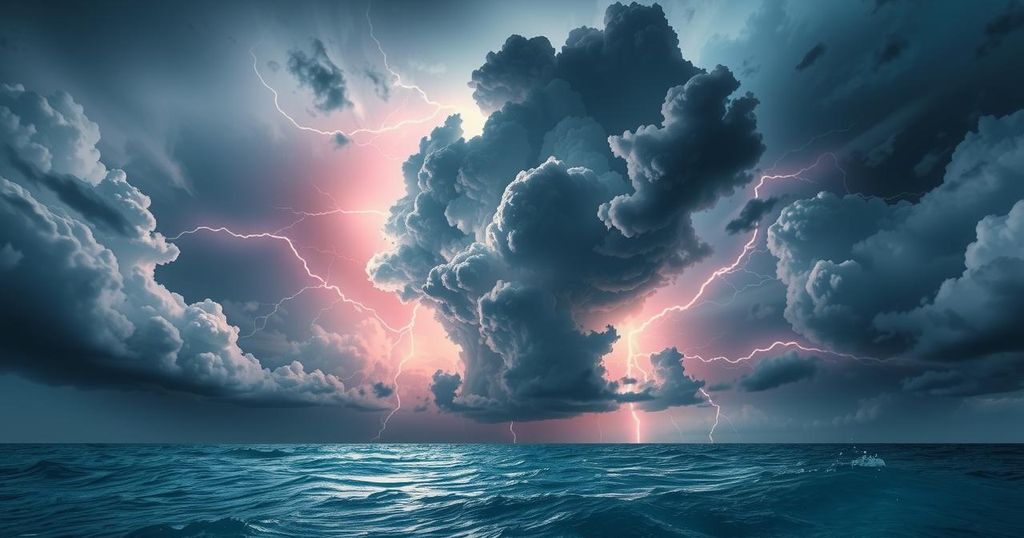Southern Hemisphere Experiences Rare Simultaneous Cyclone Event
On February 25, 2025, six tropical cyclones were recorded in the Southern Hemisphere, the first simultaneous occurrence since 1989. This season has already seen 22 storms, influenced by La Niña conditions. Cyclones Honde and Garance are posing threats of extreme weather, while Hurricane Alfred continues to intensify, affecting the Coral Sea region.
On February 25, 2025, the Southern Hemisphere experienced an exceptional meteorological event with six simultaneous tropical cyclones spinning across the South Pacific and southern Indian Oceans—tying the record set in 1989. The onset of this tropical season, which runs from November to April, has already witnessed a total of 22 tropical depressions and cyclones thus far, with the Accumulated Cyclone Energy significantly exceeding historical averages since February 12.
Among the storms were Tropical Cyclone Honde, located off the coast of Mozambique; Tropical Cyclone Garance, near Madagascar; Hurricane Bianca to the west of Australia; Hurricane Alfred northeast of Australia; and Tropical Cyclones Seru and Rae situated north of New Zealand. The conditions fostering such activity include weak wind shear and elevated sea-surface temperatures, largely attributed to La Niña, as explained by Jason Nicholls, Lead International Expert at AccuWeather.
The last advisory for Cyclone Rae was issued at 4 p.m. EST on Tuesday, coinciding with the formation of Cyclone Honde, which had caused significant damage in Fiji. The last occurrence of three simultaneous tropical cyclones in the South Pacific dates back to January 1999, while an event in January 2021 did not meet naming and basin definition criteria.
As of this season, Cyclones Honde and Garance are notable, with Honde projected to affect southern Madagascar with heavy rain and wind gusts up to 100 mph, potentially causing extensive flooding. Cyclone Garance is forecasted to near Reunion Island as a hurricane, marking a rare occurrence since Cyclone Firinga in 1989. Heavy rainfall in excess of two feet and damaging wind gusts of up to 150 mph are anticipated, presenting threats of coastal flooding and hazardous sea conditions.
Hurricane Alfred, which developed in the Coral Sea on February 24, is expected to intensify while moving south but is likely to remain east of Australia. Nonetheless, its outer bands could bring rainfall to parts of southeast Queensland and northeast New South Wales early next week. Such developments underline the ongoing significance of monitoring tropical cyclone activity in this region.
In summary, the simultaneous occurrence of six tropical cyclones in the Southern Hemisphere is a notable climatic event, showcasing unusual meteorological conditions driven by La Niña. The impacts of Cyclones Honde and Garance raise concerns over severe weather and flooding in Madagascar and Reunion Island, respectively. Continuous monitoring and preparedness are essential for safety during such extreme weather patterns.
Original Source: www.accuweather.com




Post Comment